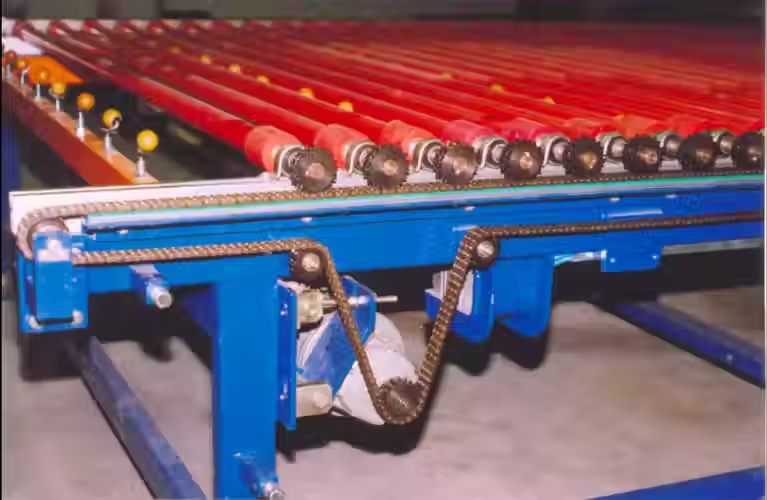Hydraulic Press Manufacturers
- Jaswanth srinivas
- Dec 11, 2024
- 3 min read
Hydraulic Press Manufacturers
Hydraulic Press Manufacturers are essential industrial machines used for shaping, forming, and molding a wide variety of materials, particularly metals, plastics, and composites. These machines operate using hydraulic force, generated by the pressurization of fluid within a closed system, to apply significant pressure on an object, enabling its deformation. The manufacturing of hydraulic presses is a complex process that combines engineering expertise, precision craftsmanship, and advanced materials.
Design and Components of Hydraulic Presses
The primary components of a hydraulic press include the frame, hydraulic cylinder, piston, pressure gauges, and the control system. The frame of the press is typically made of high-strength steel or alloy materials to withstand the immense pressure exerted during operation. The hydraulic cylinder is at the heart of the press, where fluid is pumped under high pressure to move the piston. The piston then applies force to the material being worked on. The control system, which is often computerized, ensures accurate regulation of pressure, speed, and operation, contributing to the machine’s overall efficiency and safety.
The key design aspect of a hydraulic press is its ability to generate large forces using relatively small, controlled input. Hydraulic fluid, usually oil, is stored in a reservoir and pumped through hoses to the hydraulic cylinder, where pressure is applied to the piston. This design allows for precise control over the amount of force exerted and the speed of the press, making it suitable for a wide range of applications.
Manufacturing Process of Hydraulic Presses
The manufacturing process of hydraulic presses involves several critical stages, each contributing to the machine's overall performance and durability.
Material Selection: The first step in manufacturing a hydraulic press is choosing high-quality materials for the frame, cylinder, and piston. Steel and alloy materials are commonly selected due to their strength, durability, and resistance to wear and tear.
Frame Fabrication: The frame of the press is typically fabricated by welding or assembling pre-machined steel components. The frame must be sturdy enough to support the press’s weight and withstand the immense pressures generated during operation.
Cylinder and Piston Manufacturing: The hydraulic cylinder and piston are precision-machined parts. The cylinder must be fabricated to exact specifications to ensure smooth fluid flow and prevent leaks. The piston, which moves within the cylinder, is also carefully designed to maintain a tight fit and facilitate smooth movement under pressure.
Assembly: Once the individual components are fabricated, they are assembled to form the hydraulic press. The cylinder, piston, and hydraulic fluid reservoir are connected using hoses and seals. The frame is aligned and bolted to ensure proper support and stability.
Control Systems: Modern hydraulic presses are equipped with advanced control systems, including programmable logic controllers (PLCs) or computerized numerical control (CNC) systems, which allow operators to set specific parameters for pressure, speed, and cycle time. These control systems are integrated into the hydraulic press during the assembly process.
Testing and Quality Control: After assembly, hydraulic presses undergo rigorous testing to ensure they meet performance standards. This includes pressure tests, load tests, and performance checks. The hydraulic system is tested for leaks, and the press is monitored for precision and accuracy. Any defects or issues are corrected before the press is ready for delivery.
Applications of Hydraulic Presses
Hydraulic presses are widely used in industries like automotive manufacturing, metalworking, plastic molding, and aerospace. They are used for operations such as stamping, forging, bending, cutting, and deep drawing. Their ability to apply high pressure with precision makes them ideal for producing parts with complex shapes and tight tolerances.
In automotive manufacturing, hydraulic presses are employed for metal forming and stamping body panels. In the metalworking industry, they are used for tasks such as shaping, extruding, and forging metal parts. The versatility and efficiency of hydraulic presses make them indispensable tools in modern industrial production.
Conclusion
The manufacturing of hydraulic presses is a sophisticated process that combines advanced engineering, high-quality materials, and precise machining. These machines play a vital role in a wide range of industries by enabling efficient material processing with high levels of force and accuracy. As technology continues to evolve, hydraulic presses are becoming increasingly automated, offering enhanced precision, safety, and ease of use for operators. Manufacturers are also focusing on energy efficiency and sustainability, ensuring that hydraulic presses remain at the forefront of industrial innovation.




Comments